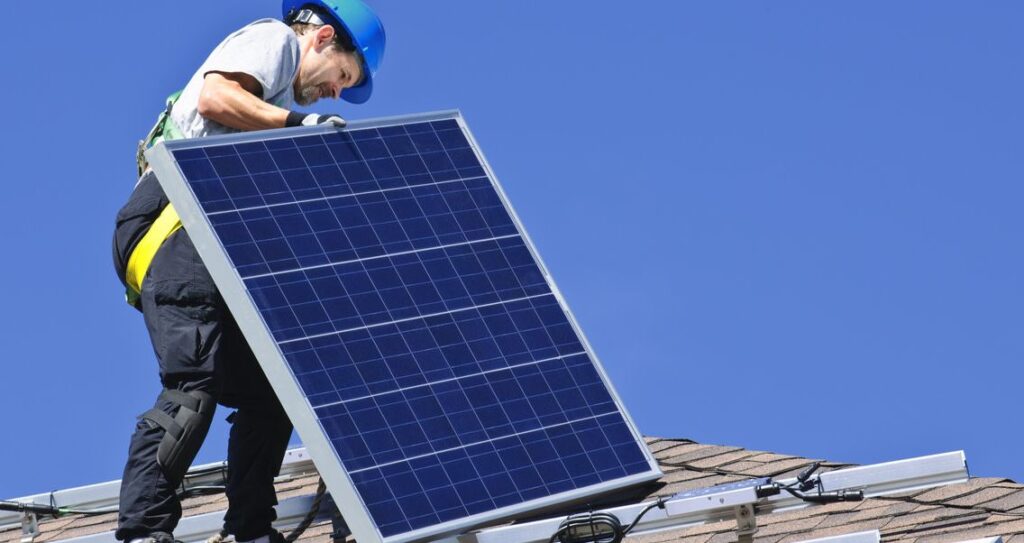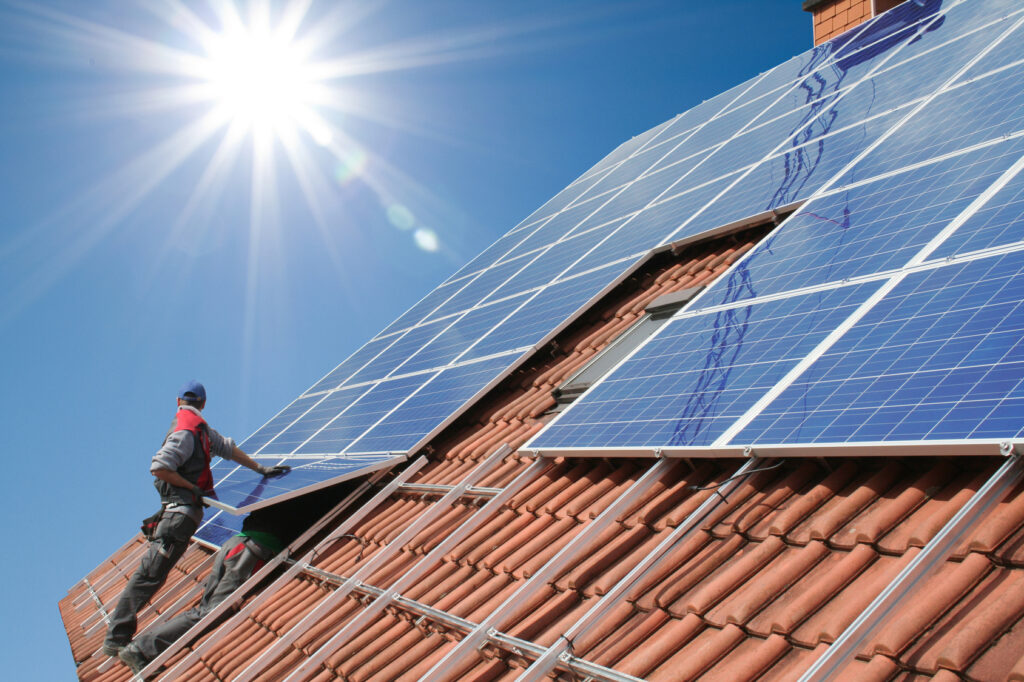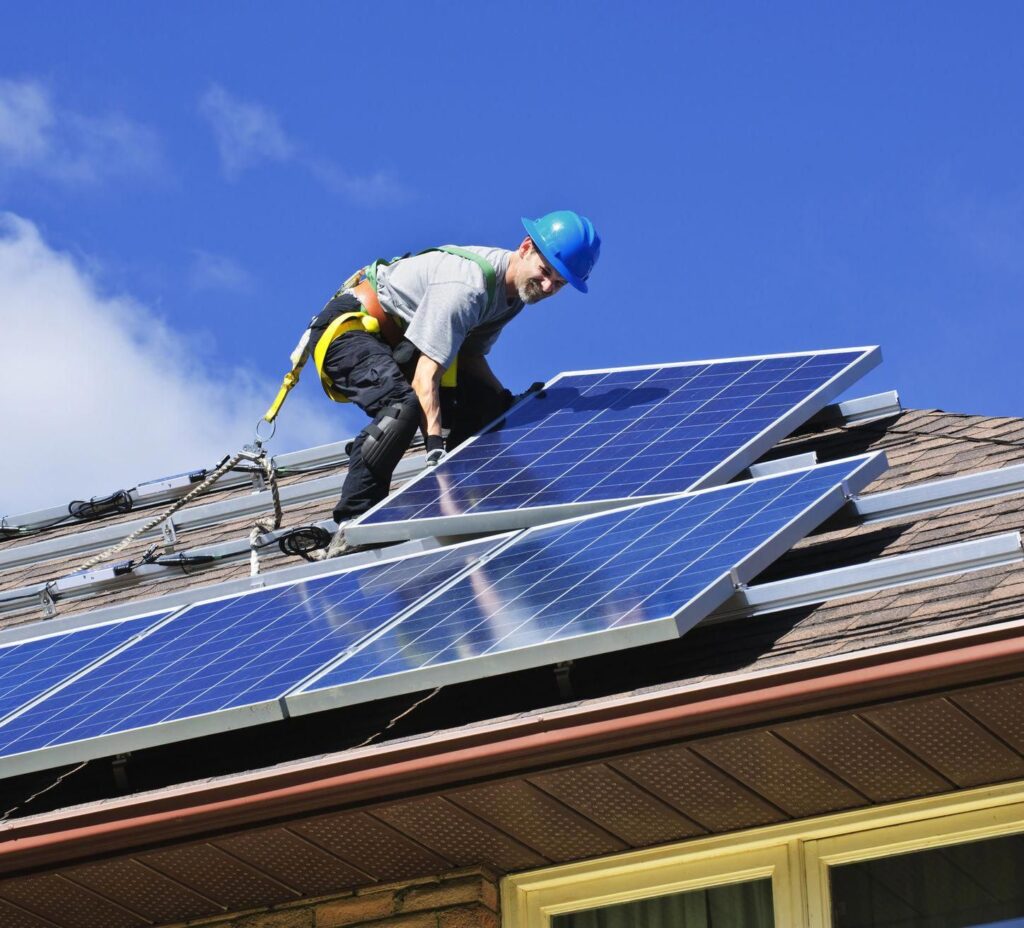Photovoltaic fitter
What is photovoltaics?
Photovoltaics (also abbreviated PV from the word photovoltaics) is a type of device that generates electricity through the action of solar radiation.
How does photovoltaics work?
In the simplest terms, photovoltaics is the best and simplest method for generating electrical energy by converting the sun's rays into electrical (direct) current. So-called photovoltaic panels are responsible for this. The electricity generated is then fed into an inverter, which converts it into alternating current (AC) power that can even supply an entire building with all its electrical appliances, such as a television, computer, dishwasher or refrigerator. Energy not used on a regular basis is fed back into the grid and can then be returned to the user, who can use it during periods of less sunny weather, such as winter.
The correct choice of installation capacity should be such that the energy produced during the year does not exceed the annual consumption. In addition, it is worth taking into account factors such as the exposure of the roof surface to the sun's rays; the angle of its inclination; and the size of the entire roof. The lower the insolation through, for example, shading or directing the roof in an unfavourable direction, the higher the power of the installation should be.

Interest in photovoltaics in Poland and its effects
The Renewable Energy Institute points out that in Poland, photovoltaics have long ranked high among the most rapidly growing renewable energy sources (RES) sectors. As much as 1.5% of electricity was generated by this method in 2021. At that time, micro-installations accounted for more than 70% of installed photovoltaic capacity. We can speak of a high level of interest, the size of which is attributable to the possibility to produce energy on one's own, favourable legal regulations (e.g. tax breaks), or supportive government or EU programmes.
Earlier, between 2013 and 2016, Poland saw a gigantic growth in photovoltaics, with installed PV capacity increasing from 2.1 megawatts to 219.2 megawatts. In 2017, on the other hand, the mid-year period saw 3.5% of the total renewable energy generated - this was 300 MW. Many investors then decided on micro photovoltaic installations, which are backyard renewable energy sources; there were around 29,000 of these and they were worth 180 megawatts. In 2018, on the other hand, it was 32 MW, with 5,000 micro-installations.
The prevailing meteorological conditions, and more specifically the quality of the sunshine, determine whether a photovoltaic market will work in a country. A key factor is the intensity of solar energy, which takes into account daily and annual cyclicity when it is examined. In Poland, this is between 900 and 1200 kWh/m2 per year. This is sufficient to invest in this field of energy generation. The highest intensity in Poland takes place in the centre and south of the country.
Advantages of photovoltaics

When obtaining energy in this way, the photovoltaic user has an advantage over electricity gained from energy sources such as biomass, wind or water. It can be used almost anywhere. The amount of energy gained depends on the intensity of the sun's rays falling on the Earth's surface.
After about ten years of use, it is clear to see that photovoltaic panels really do pay for themselves and that the investment in them pays off. They keep your electricity bills considerably lower and, with the right installation power, can make you decide not to use your previously used energy source at all.
Photovoltaic installer
It is not against the law to install photovoltaic systems yourself, but it is more worthwhile to hire a professional to do so if their buyer lacks comprehensive professional knowledge of the subject.
This involves a huge reduction in the risk of making many mistakes. It is about not paying attention to, among other things:
- the position or pitch of the roof in relation to the sun,
- growing trees in the area and things like that,
- roof surface exposure,
- failure to take precautions with this type of contact with electricity or the high height between the roof and the ground,
- lack of skills acquired by the installer during training to install photovoltaic systems.
What responsibilities does a photovoltaic installer have?
The fitter's job is to install the solar panels, then connect them to the inverter and then the whole thing to the electrical system.
Roofing skills and a solid roof covering are needed to install photovoltaic panels well. Installing electronic components requires expertise in electrical measurements, configuring current inverters, also planning and installing electrical wiring.
In order for the fitter to be able to perform his or her task, he or she should be qualified:
1) A certificate issued by the Office of Technical Inspection (UDT), confirming that you are qualified to install types of renewable energy source (RES) installations. In addition to photovoltaic systems, these include:
- heat pumps,
- shallow geothermal systems,
- solar thermal systems,
- biomass boilers and cookers.
2) SEP (Association of Polish Electricians) category E licence (operation of installations, networks and electromagnetic equipment) and category D licence (operation of installations, networks and electromagnetic equipment) permitting contact with current.
The installer must have completed a course at a specialised, accredited facility and have the qualification documented by a correctly passed national examination, taken up to 12 months after completion of the training.
Characteristics of a good fitter
When heading towards hiring a professional to install a photovoltaic system, it is worth assessing whether he or she is open to the customer to answer any questions about the job. This demonstrates his high level of knowledge and, consequently, a confident and high quality service.
Better cooperation is also suggested by his possession of a driving licence, his ability to plan the commissioned activities, his attention to detail, his punctuality and his good contact.
Wages for fitters
In each profession, wages are determined by the position, the quantity and quality of the tasks performed, the professional qualifications, the form of employment or the region. For fitters, the rate depends on the season. For beginners, the pay is less - they tend to do only simple electrical work, prepare material and take care of tidiness. The advanced ones naturally get a lot more - for supervising work, keeping paperwork, taking measurements, configuring current inverters, planning and installing electrical wiring.


































